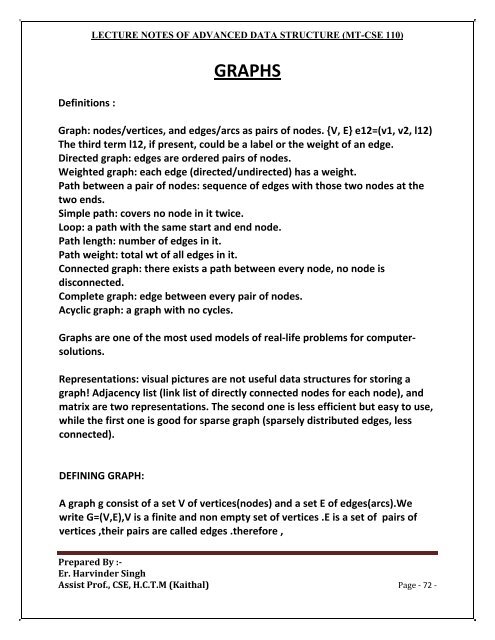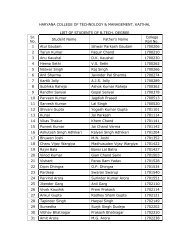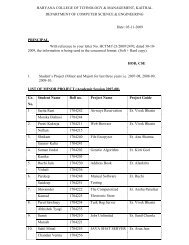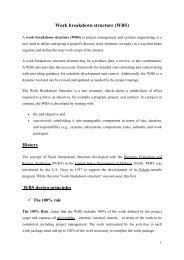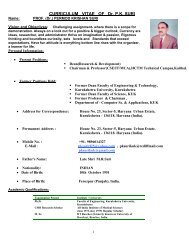Create successful ePaper yourself
Turn your PDF publications into a flip-book with our unique Google optimized e-Paper software.
Definitions :<br />
LECTURE NOTES OF ADVANCED DATA STRUCTURE (MT-CSE 110)<br />
GRAPHS<br />
Graph: nodes/vertices, and edges/arcs as pairs of nodes. {V, E} e12=(v1, v2, l12)<br />
The third term l12, if present, could be a label or the weight of an edge.<br />
Directed graph: edges are ordered pairs of nodes.<br />
Weighted graph: each edge (directed/undirected) has a weight.<br />
Path between a pair of nodes: sequence of edges with those two nodes at the<br />
two ends.<br />
Simple path: covers no node in it twice.<br />
Loop: a path with the same start and end node.<br />
Path length: number of edges in it.<br />
Path weight: total wt of all edges in it.<br />
Connected graph: there exists a path between every node, no node is<br />
disconnected.<br />
Complete graph: edge between every pair of nodes.<br />
Acyclic graph: a graph with no cycles.<br />
Graphs are one of the most used models of real‐life problems for computer‐<br />
solutions.<br />
Representations: visual pictures are not useful data structures for storing a<br />
graph! Adjacency list (link list of directly connected nodes for each node), and<br />
matrix are two representations. The second one is less efficient but easy to use,<br />
while the first one is good for sparse graph (sparsely distributed edges, less<br />
connected).<br />
DEFINING GRAPH:<br />
A graph g consist of a set V of vertices(nodes) and a set E of edges(arcs).We<br />
write G=(V,E),V is a finite and non empty set of vertices .E is a set of pairs of<br />
vertices ,their pairs are called edges .therefore ,<br />
Prepared By :<br />
Er. Harvinder Singh<br />
Assist Prof., CSE, H.C.T.M (Kaithal) Page ‐ 72 ‐


